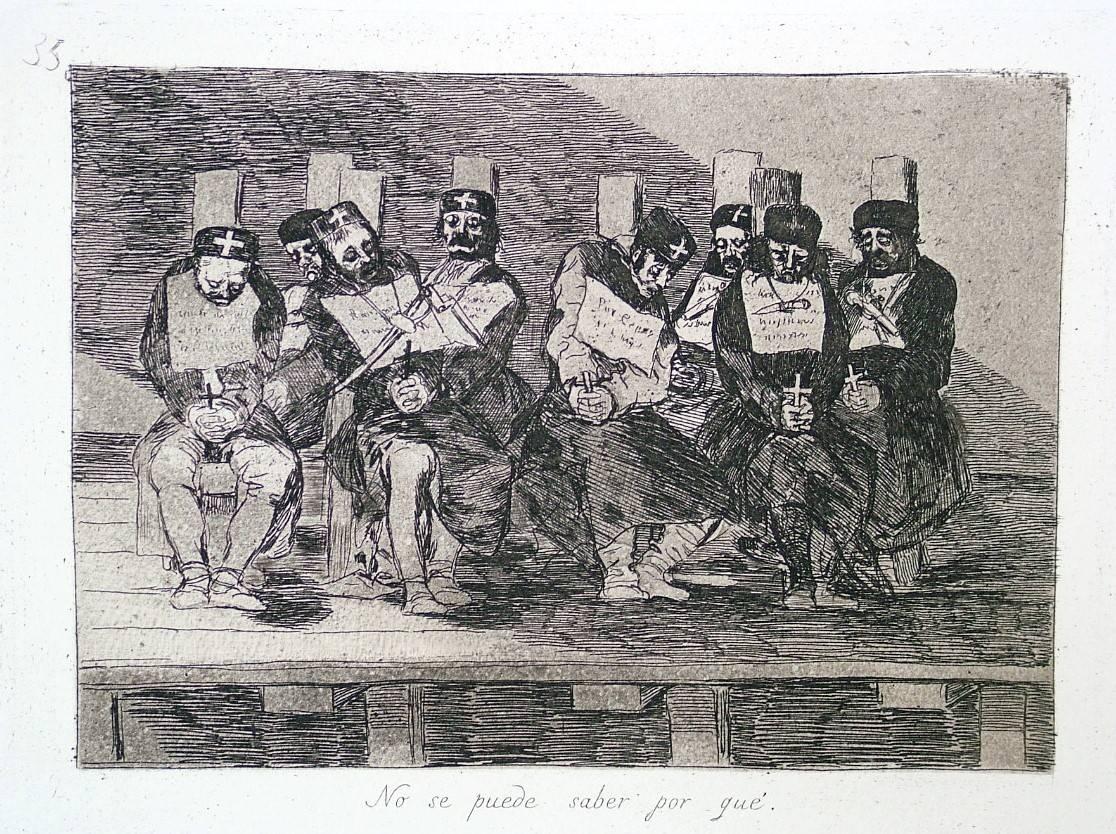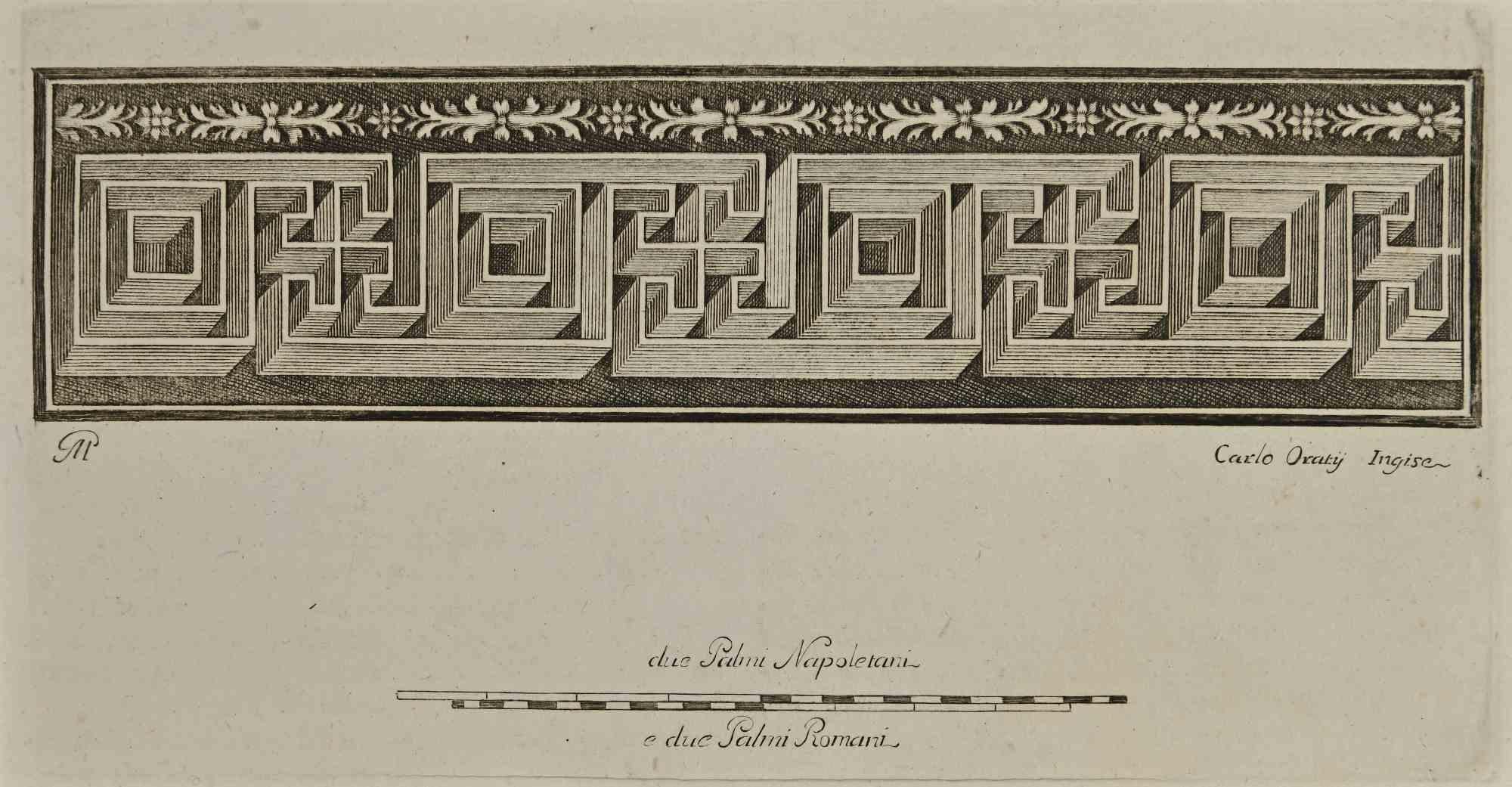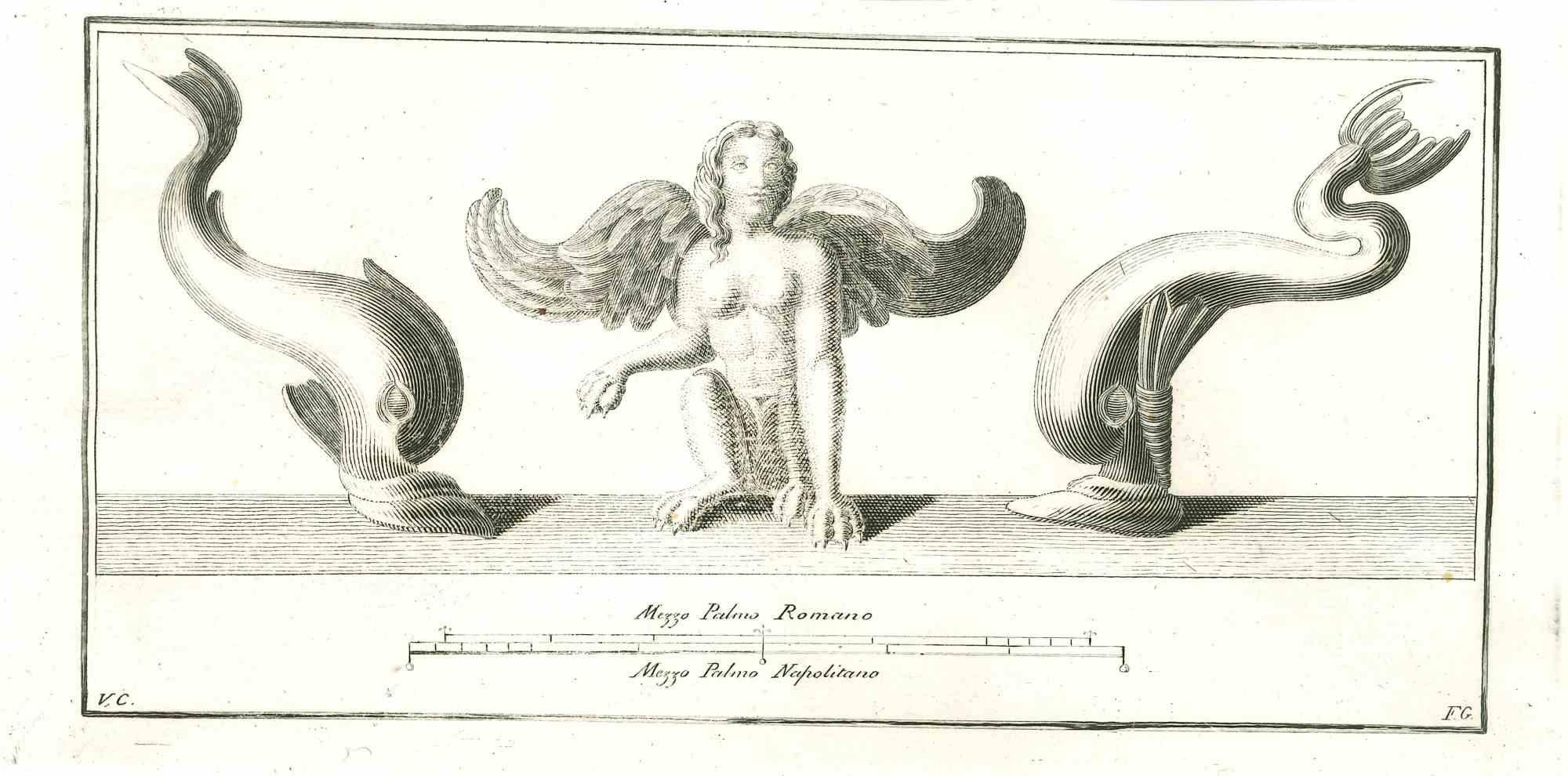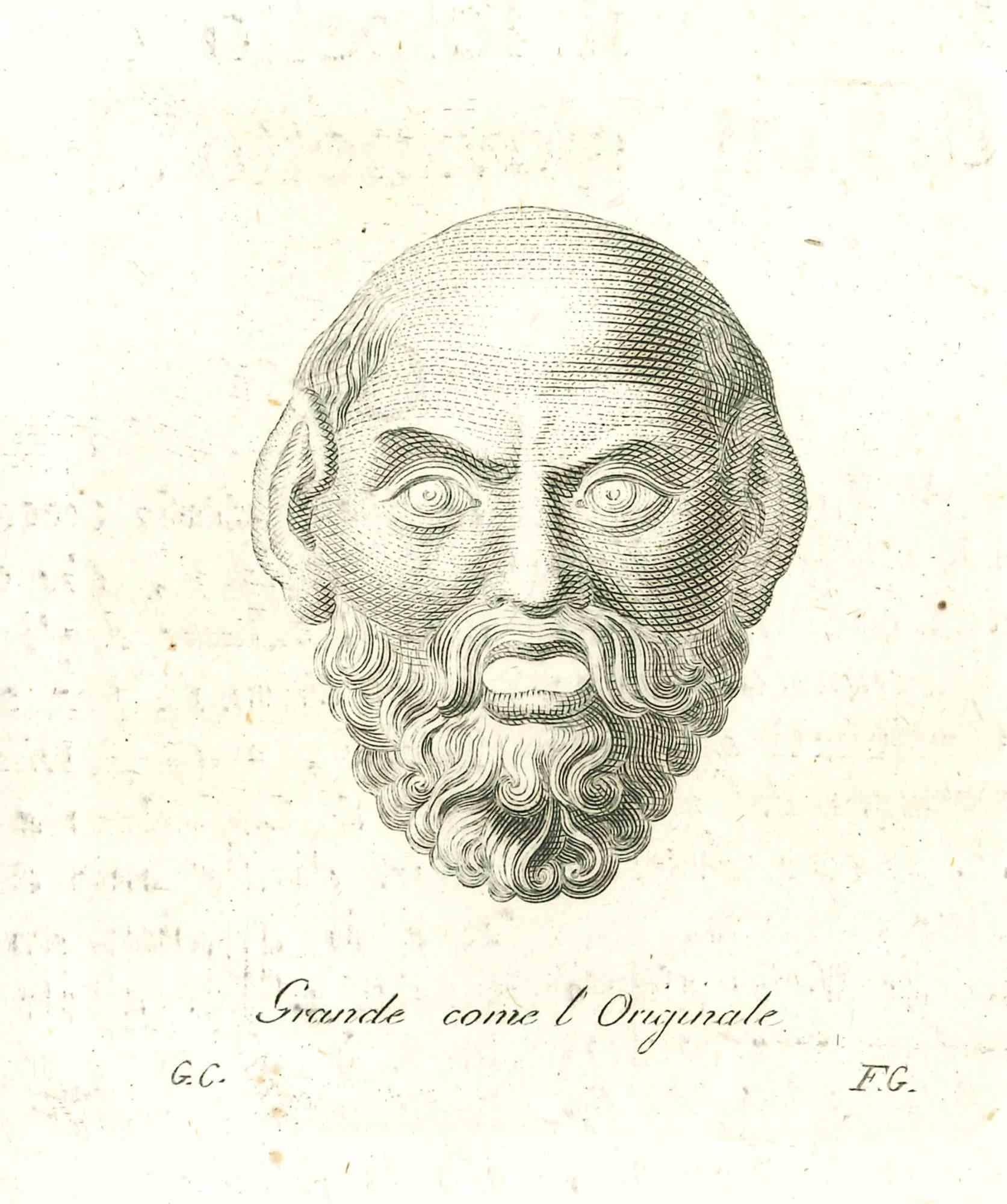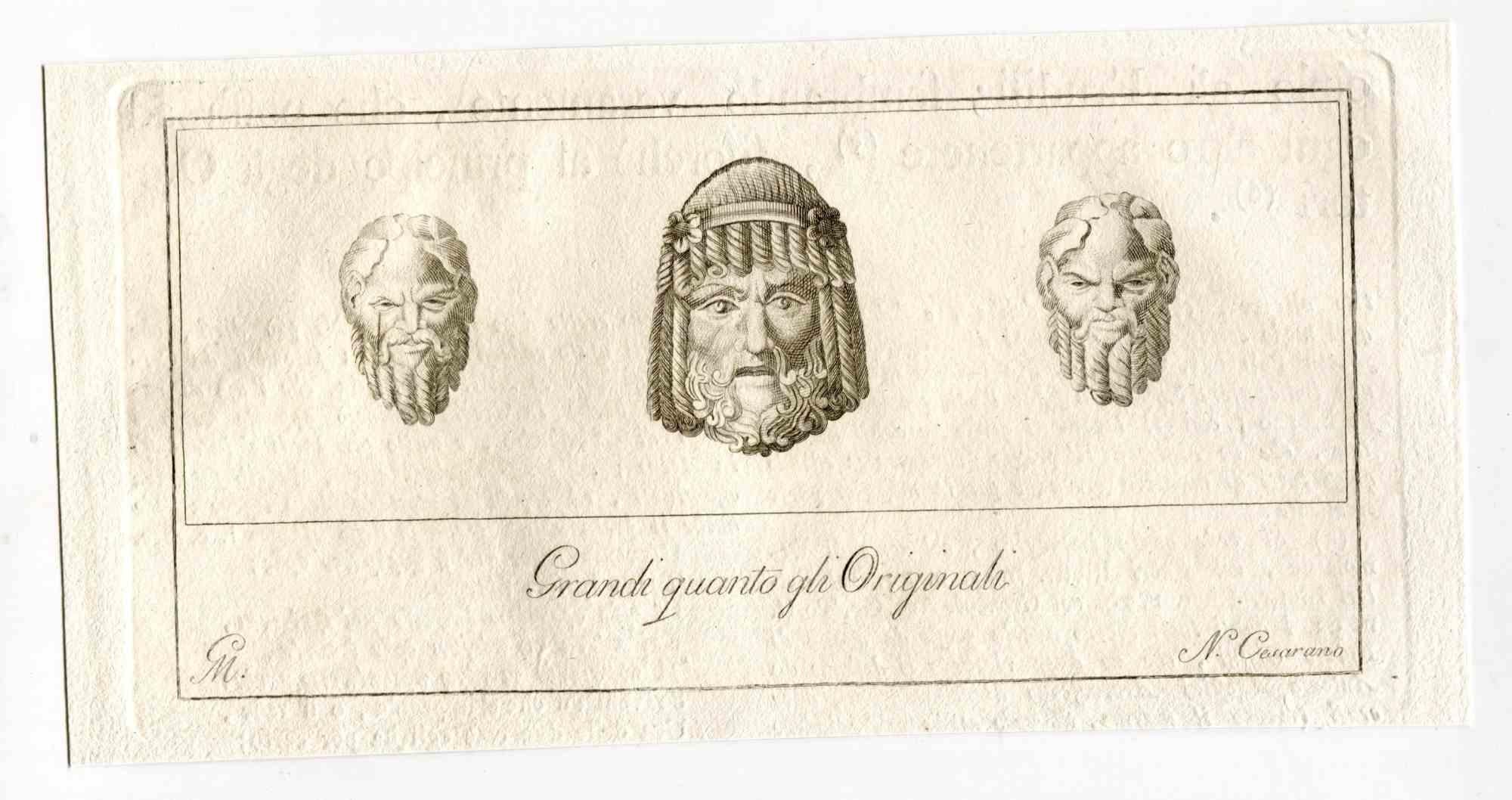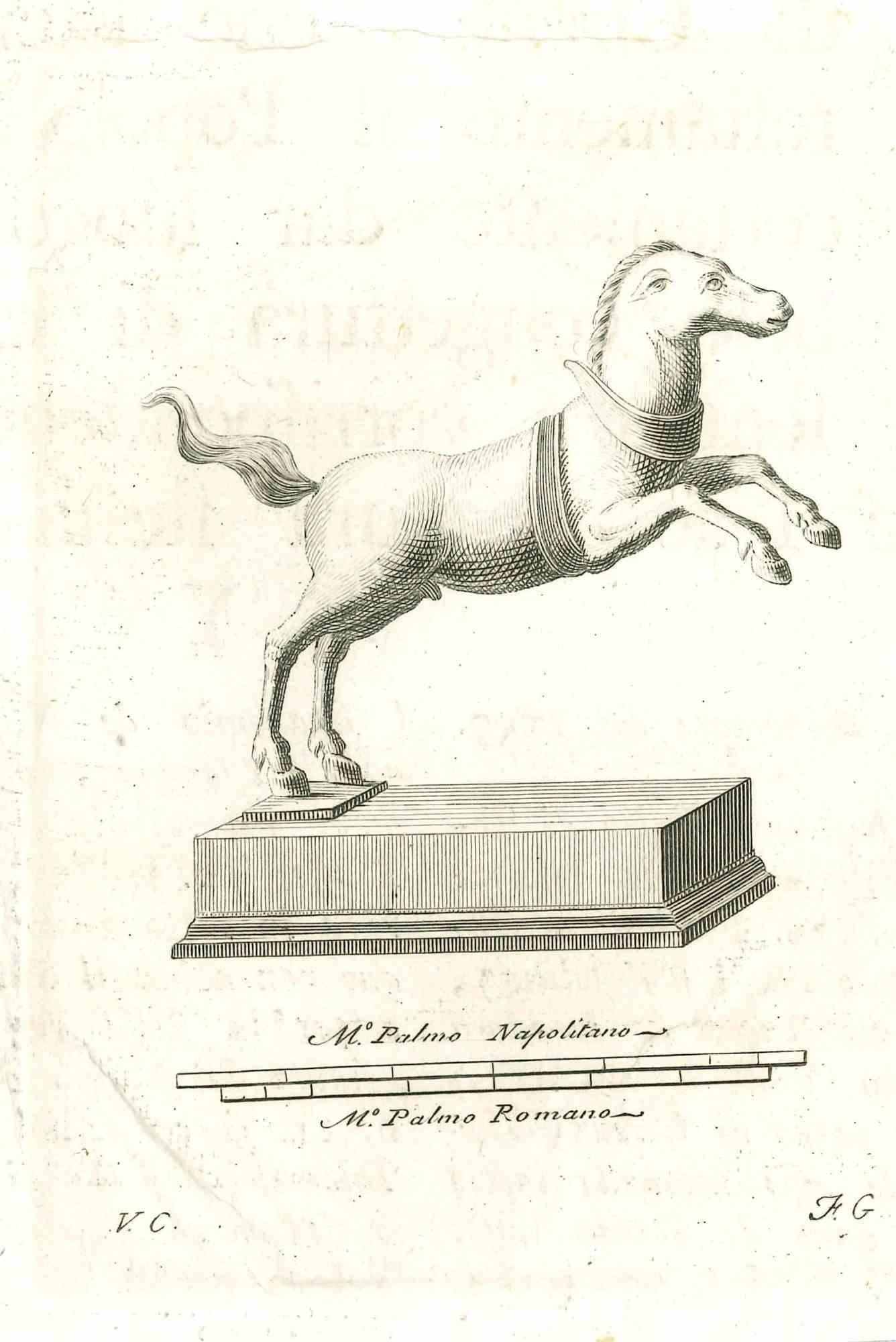Items Similar to Bacchanal
Want more images or videos?
Request additional images or videos from the seller
1 of 10
Giovanni Andrea PodestàBacchanal1649
1649
About the Item
Bacchanal
Etching, 1649
Inscribed in the square left: "Magnificentis/simo Principi/Paolo lorda/no. II Bracci/ani Duci/Aud. P.DDD/1640; Inscribed on right: Rome apud Franciscsum Saluucium
Condition: Usual centerfolds from paper manufacture
Plate: 10 3/8 x 15 1/2"
Sheet: 11 1/2 x 16 1/2";
References:
Bartsch XX.4
Sopher Plate 145
An impression of this image is in the collections of the Philadelphia Museum of Art and the National Gallery of Art, Washington
An exceptionally rich impression in excellent condition.
From Wikipedia, the free encyclopedia
Putti as Allegory of Music
Giovanni Andrea Podestà or Giovanni Andrea Podesta (1608 - c. 1674) was an Italian painter and engraver who was principally active in Rome. His principal subject matter is children playing in landscapes with classical objects. His works show the influence of Poussin's Arcadian landscapes and bacchanals, which were ultimately derived from Titian's bacchanals.
Life
Giovanni Andrea Podestà was born in Genoa. He was formed in Genoa with Giovanni Andrea de Ferrari and Domenico Fiasella according to the information provided by the contemporary Genoese biographer Raffaele Soprani. He is also recorded as an apprentice of Giovanni Battista Paggi in 1627.
His presence is documented from in 1634 in Rome where he made drawings after the statues and ancient reliefs at the famous Giustiniani collection. These were subsequently engraved for publication in the 'Galleria Giustiniani'. The artist's career ran a course similar to that of the young Domenico Fiasella. In Rome his art evolved in contact with the works of Poussin, Andrea di Leone, Pietro Testa and the Flemish artists François Duquesnoy and Karel Philips Spierincks.
In 1650 Podesta became a member of the Accademia di San Luca in Rome. He died in Genoa.
Work
A majority of Podestà's paintings depict children playing amid classical objects in landscapes. Few of his paintings have survived and his work is now mainly known from the etchings he made himself after his compositions. In particular a series of prints published in Rome which date from 1636 to 1661 form an important source of information on his work.
Putti in a Landscape
Podestà made prints after the bacchanals of Titian, which he dedicated to powerful patrons. He dedicated a series of prints to the pleasures of wine to Paolo Giordano Orsini II, Prince of Bracciano. Orsini also owned multiple paintings by Podestà, including two landscapes and seven small paintings of seafood. A Worship of Venus etched after Titian was dedicated to Cassiano dal Pozzo and other prints of bacchanals to Fabio della Cornia. The artist clearly tried tocurry favour with the Barberini family through these dedications.[3] Cassiano dal Pozzo was known for his archaeological interests. Podestà's acquaintance with Cassiano dal Pozzo may have played a role in Podestà’s artistic development and may have put him in the circle of Poussin. This circle included Flemish artists such as the sculptor François Duquesnoy and the painter Karel Philips Spierincks who at one time or the other shared a home in Rome and also had common artistic interests. In this circle there was an interest in Classicism as well as a growing interest and admiration for the bacchanals of Titian. This found expression in copies and reproductions after Titian as well as new compositions inspired by the theme of the bacchanals. The mutual influence of the artists in this circle is clear from the fact that Podestà 's Bacchus and Ariadne (At Arte Antico) cites in the putto who scares another putto with a mask similar figures in a Drunken Silenus of the Flemish painter Karel Philips Spierincks.
The quality of his work and its closeness to the Poussin circle was such that it is often difficult to distinguish his work from compositions by Poussin and Spierincks. His work has considerable charm, a feature sometimes lacking in the work of his more illustrious contemporaries. One scholar noted that 'Although Podestà was neither a great designer nor a great draughtsman, his amusing conceits display the lighter side of the often sober classical devotees in Rome in the 1630s and 1640s.' Although a rather marginal artist, his works depicting putti at play definitely had an influence on late Genoese Baroque painting, such as on the decorative artists of the 'Casa Piola'.
The few drawings by Podesta that have been preserved show features familiar from his etchings: contorted facial expressions, small twisting figures, patches of dark cross-hatching and an interest in still-life. In their precision they are similar to and possibly derived from Sinibaldo Scorza, whose prints may have been an inspiration for Podestà's own etchings.
- Creator:Giovanni Andrea Podestà (1615 - 1674, Italian)
- Creation Year:1649
- Dimensions:Height: 11.5 in (29.21 cm)Width: 16.5 in (41.91 cm)
- Medium:
- Movement & Style:
- Period:
- Condition:
- Gallery Location:Fairlawn, OH
- Reference Number:
About the Seller
5.0
Recognized Seller
These prestigious sellers are industry leaders and represent the highest echelon for item quality and design.
Platinum Seller
These expertly vetted sellers are 1stDibs' most experienced sellers and are rated highest by our customers.
Established in 1978
1stDibs seller since 2013
713 sales on 1stDibs
Typical response time: 1 hour
Associations
International Fine Print Dealers Association
- ShippingRetrieving quote...Ships From: Fairlawn, OH
- Return PolicyA return for this item may be initiated within 10 days of delivery.
More From This SellerView All
- El Vergponzoso (The Shamefaced One)By Francisco GoyaLocated in Fairlawn, OHEl Vergponzoso (The Shamefaced One) etching & aquatint, 1799 Unsigned (as are all Goya etchings) From: Los Caprichos, Plate 54 From the First Edition, pri...Category
1790s Old Masters Figurative Prints
MaterialsAquatint
- Marble relief of a trireme from the Temple of Fortuna, Praeneste, from VasiBy Giovanni Battista PiranesiLocated in Fairlawn, OHMarble relief of a trireme from the Temple of Fortuna, Praeneste, from Vasi, candelabri, cippi, sarcofagi, tripodi, lucerne, ed ornamenti antichi disegnati ed incisi dal Cav. Gio. Ba...Category
1770s Old Masters Figurative Prints
MaterialsEtching
- Father Stefan Fridolin, "Schatzbehalter" (Treasury of the True RichesLocated in Fairlawn, OHFather Stefan Fridolin, "Schatzbehalter" (Treasury of the True Riches of Salvation): The 30th Figure - Astrological Diagram with Scene of the Nativity Woodcut, 1491 Unsigned, as issued Published by Anton Koberger Diagram has Zodiac signs on outer ring, planets in the lower registers, and Nativity in the center. Condition: Very good for a 15h century woodcut, with the usual slight age stains Sheet size: 11 1/2 x 8 1/4 inches Wogelmut was the teacher of Albrecht Durer and employed young Durer in many project of the last decade of the 15th century. Michel Wolgemut Biography Wolgemut trained with his father Valentin Wolgemut (who died in 1469 or 1470) and is thought to have been an assistant to Hans Pleydenwurff in Nuremberg. He worked with Gabriel Malesskircher in Munich early in 1471, leaving the city after unsuccessfully suing Malesskircher's daughter for breach of contract, claiming she had broken off their engagement. He then returned to his late father's workshop in Nuremberg, which his mother had maintained since Valentin's death. In 1472 he married Pleydenwurff's widow and took over his workshop;[3] her son Wilhelm Pleydenwurff worked as an assistant, and from 1491 a partner, to Wolgemut. Some consider Wilhelm a finer artist than Wolgemut, however he died in January 1494, when he was probably still in his thirties. Wilhelm's oeuvre remains unclear, though works in various media have been attributed to him. Woodcuts Michael Wolgemut, Danse Macabre, 1493 Two large and copiously illustrated books have woodcuts supplied by Wolgemut and his stepson Wilhelm Pleydenwurff; both were printed and published by Germany's largest publisher, the Nuremberger Anton Koberger, who was also Dürer's godfather. The first is the Schatzbehalter der wahren Reichthumer des Heils (1491); the other is the Historia mundi, by Schedel (1493), usually known as the Nuremberg Chronicle...Category
15th Century and Earlier Old Masters Figurative Prints
MaterialsWoodcut
- Les Pauvres (The Poor), from the famous Blue PeriodBy Pablo PicassoLocated in Fairlawn, OHLes Pauvres (The Poor) Created during the artist's famous "Blue Period" Etching on Van Gelder Zonen paper, 1905 From: "La Suite de Saltimbanques" (Acrobats) [...Category
Early 1900s French School Figurative Prints
MaterialsEtching
- The BarkerBy Reginald MarshLocated in Fairlawn, OHThe Barker Etching, 1931 Unsigned (as usual for the Whitney edition) Numbered in pencil lower left Blind stamp of the Whitney Museum (WM) lower right From: Reginald Marsh, Thirty Etc...Category
1930s Figurative Prints
MaterialsEtching
- L'Enfant Et Le Maître Décole (The Child and the School Teacher)By Marc ChagallLocated in Fairlawn, OHL'Enfant Et Le Maître Décole (The Child and the School Teacher Etching with hand coloring by Chagall, 1927-1930 Signed in the plate lower right (see photo) From La Fontaine Les Fable...Category
1920s French School Figurative Prints
MaterialsEtching
You May Also Like
- One Can't Tell Why - Proof from the Disasters of WarBy Francisco GoyaLocated in New York, NYFrancisco José de Goya y Lucientes (1746 Fuendetodos – Bordeaux 1828), No se puede saber por qué – One can’t tell why ca. 1808–1814, etching, burnished aquatint, drypoint, an...Category
1810s Old Masters Figurative Prints
MaterialsDrypoint, Etching, Aquatint
- Ancient Roman Fresco Herculaneum - Etching by Carlo Oratij - 18th CenturyLocated in Roma, ITAncient Roman Fresco from the series "Antiquities of Herculaneum", is an etching on paper realized by Carlo Oratij in the 18th Century. Signed on the plate. Good conditions. The e...Category
Late 18th Century Old Masters Figurative Prints
MaterialsEtching
- Antiquities of Herculaneum Exposed- Original Etching - 18th CenturyLocated in Roma, ITAntiquities of Herculaneum Exposed, original etching from the end of the 18th century, made by Various Old Masters. Good condition...Category
Late 18th Century Old Masters Figurative Prints
MaterialsEtching
- Ancient Roman Relief - Original Etching - 18th CenturyLocated in Roma, ITAncient Roman Relief, from the series "Antiquities of Herculaneum", is an original etching on paper realized by an anonymous Artista in the 18th century. ...Category
Late 18th Century Old Masters Figurative Prints
MaterialsEtching
- Ancient Roman Fresco - Original Etching - 18th CenturyLocated in Roma, ITAncient Roman Fresco from the series "Antiquities of Herculaneum", is an original etching on paper realized by an anonymous in the 18th Century. Signed ...Category
18th Century Old Masters Figurative Prints
MaterialsEtching
- Ancient Roman Statue - Original Etching by Vincenzo Campana - 18th CenturyBy Vincenzo CampanaLocated in Roma, ITAncient Roman Statue, from the series "Antiquities of Herculaneum", is an original etching on paper realized by Vincenzo Campana in the 18th Century. Signed on the plate on the low...Category
Late 18th Century Old Masters Figurative Prints
MaterialsEtching
